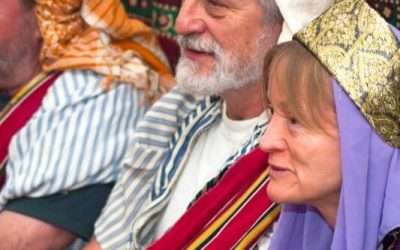We grow up hearing a collection of stories. Stories come from family, government, religious leaders, and the like. These stories collectively make up our worldview. We have stories that tell our history, what value we fear, and stories that represent our unrealized dreams. Think of the stories you have been told and the stories you tell others. Those stories provide the lens through which you see the world.
Likewise, people from different cultures have different worldviews. They have other stories, different histories, different values, different fears, and different dreams. The beautiful thing about the gospel is that it fits within every culture. Although, not everything in a culture aligns with the gospel. The gospel contradicts all cultures at some level. The missionary’s job is to learn the stories of their focus people group and how to retell their story with the antidote of the gospel applied. This article will help you think about sharing the gospel through a worldview lens.
The idea of leveraging an existing paradigm to share the gospel makes sense, doesn’t it? The core question to be considered is, does the Bible present this practice? Let’s look at the Apostle Paul. Paul was bi-cultural. He is a self-professed Hebrew of Hebrews, a Pharisee, and a Jew from the tribe of Benjamin. (Phil 3:5-6). But at the same time, Paul was from Tarsus, a Roman city. Strabo, a first-century geographer, said that Tarsus surpassed Athens and Alexandria in culture and learning. Paul spoke Greek, utilized his Roman citizenship, and felt at home among gentiles.
Paul had multiple stories speaking into his worldview. He carried the Jewish stories but also the Roman stories. Paul said he became a Jew to Jews and Gentile to Gentiles. (1 Cor 9:19-20). To become all things to Jews and Greeks, Paul knew both groups’ stories, values, fears, and unrealized dreams. Therefore, most of Paul’s missionary activity should not be viewed as cross-cultural; instead, he was very much at home in both cultures.
To become all things to Jews and Greeks, Paul knew both groups’ stories, values, fears, and unrealized dreams.
How will knowing about a culture inform the mode and stories we use to share the gospel? Paul knew the story of His audience, and He retold their story in light of the gospel. Paul and his traveling team would start in a synagogue in a Jewish context. Going to the synagogue is the mode of entry. The mode of ministry entry is “a way or manner in which something occurs or is experienced, expressed, or done.” This is the place where Jewish people gather and get instruction. Paul used his Jewish status to be able to share in the synagogue. (Acts 13:15)
His message to the Jewish people retells their story. He retells Israel’s narrative using their scripture. The retelling of their story is a point of agreement or a bridge between their beliefs and the gospel. Paul presents a crucified Jewish Messiah raised from the grave from their own stories. A crucified messiah contradicted their worldview. The gospel always brings tension and contradiction to worldviews that aren’t under the lordship of Christ.
Paul in Athens starts in the synagogue and marketplace. (Acts 17:17) These are two places where Paul would have felt at home. Paul was a tent-maker by trade and would have spent time in the marketplace. Tent-making wasn’t a later-in-life trade he took up, but it was most likely learned and cultivated in Tarsus. Tarsus was known for its linen industry. It seems that the synagogue doesn’t produce much of an audience, but Paul’s mode of engagement in the marketplace catches the attention of Epicurean and Stoic philosophers. (Acts 17:18) This invites him to speak to a crowd at the Areopagus. This is a different mode than he used with Jewish people.
The message to the Athenians retells their story. It’s unclear how much of their story Paul knew, but he did some research early in his time in Athens. He surveyed the city. He learned their history, values, fears, and unrealized dreams. Paul begins by observing and telling their story with the idol of the unknown god. He continues by appealing to creation, God’s sovereign and immortal nature, and quoting their poets. These are items of agreement or bridges to the point of contradiction. Paul does not shy away from proclaiming a resurrected Jesus and calling them to repentance. The resurrected Jesus brings tension and contradiction to their worldview.
Paul does not regard the Athenian system of faith and worship as similar to the Christian convictions concerning God, the world, humankind’s history, and salvation. He does not argue for an essential continuity between the beliefs of pagan poets and philosophers and the revelation of the God whom he proclaims. However, Paul uses their stories to bridge the gospel but ultimately disputes the Athenians’ understanding of the divine and, thus, their worldview.
Where does this leave us today? What should emerging cross-cultural gospel workers do? Let me submit a few takeaways.
- Will you evaluate your mode and message if you are still waiting to see fruit among your focus people? Are you adapting your mode and message to fit their worldview? Before changing, ensure you have spent adequate time engaging your people. Generally, gospel tools should be used at least 100 times before considering any changes.
- How well do you know their stories? Learn your focus on people’s history, values, fears, and unrealized dreams. Learn from them to find the redemptive analogies that will allow you to best retell their story in light of the gospel.
- As you look for inside partners and catalytic leaders, look for bicultural people. Today with urbanization, the global diaspora phenomena, and hybrid identities, bi-cultural people will be a kingdom asset to bridge the gospel to a more diverse population and have a better understanding of potential barriers.
- Lastly, if you do not have a focus group, fast and pray and ask God to give you direction and a burden for a people group.
If you need practical training on learning your people group’s history, values, fears, and unrealized dreams, check out this free training on ethnography in missions. (to be added when completed)




